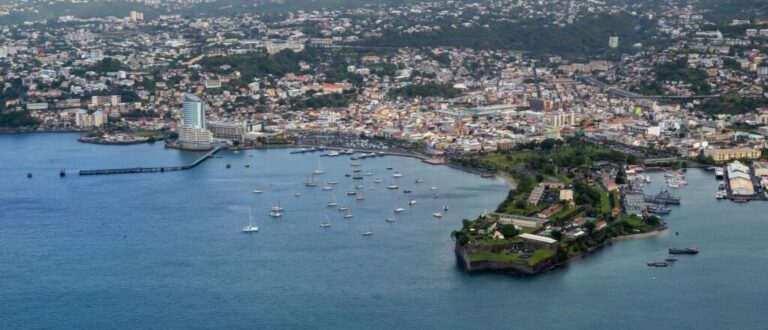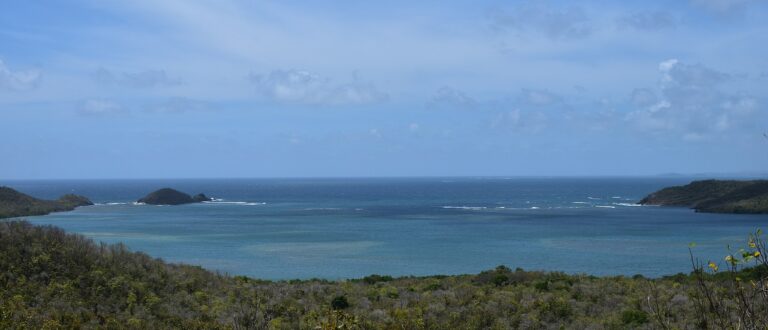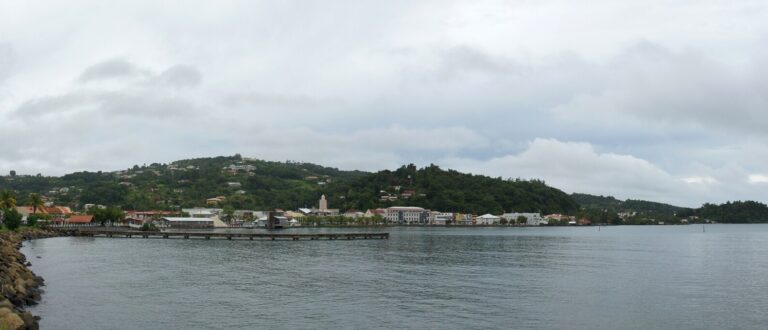Sorry, no records were found. Please adjust your search criteria and try again.
Sorry, unable to load the Maps API.
Sailing to Martinique A map of the best ports and anchorages
Live ranking of your favorite ports and anchorages in Martinique: leave reviews, share your best photos, or add a new spot you’ve discovered. Join the discussion on Martinique Sailing Group for the latest news.
Most popular anchorages in Martinique
(Add an anchorage)Always choose the safest spot. Try zooming in to avoid seaweed fields, then click to start your list of favorites.
-
Bibin Baie de Carénage
C’est magnifique. Excellents renseignements. Bravo pour ce site
-
Despite its popularity, it remains a serene spot. Adjacent to a quiet village where everything is wi… Read more about this listing
-
While it lacks a dock, the area compensates with a snack bar where you can grab a bite to eat.
-
A pleasant anchorage for sailors looking for a bit of tranquility. The seabed is mostly sandy, makin… Read more about this listing
-
A popular anchorage known for its spacious and well-protected bay. The holding is generally reliable… Read more about this listing
-
With its powdery white sand and clear waters, it feels like a tropical paradise. The shallow depth o… Read more about this listing
Most popular ports and marinas in Martinique
(Add a port)Find a berth for your boat. Keep an eye on the tide and weather forecast, then click to call the port.
-
The mooring conditions are generally good, with a combination of sand and mud seabed, making it suit… Read more about this listing
-
The marina offers pendilles which are fairly straightforward for smaller vessels. The location isn’t… Read more about this listing
-
The facilities are well-kept, with essential services like water, electricity, Wi-Fi, and fuel readi… Read more about this listing
-
The marina offers a wide array of services, from fuel and water to well-maintained showers and Wi-Fi… Read more about this listing
Martinique sailing itinerary
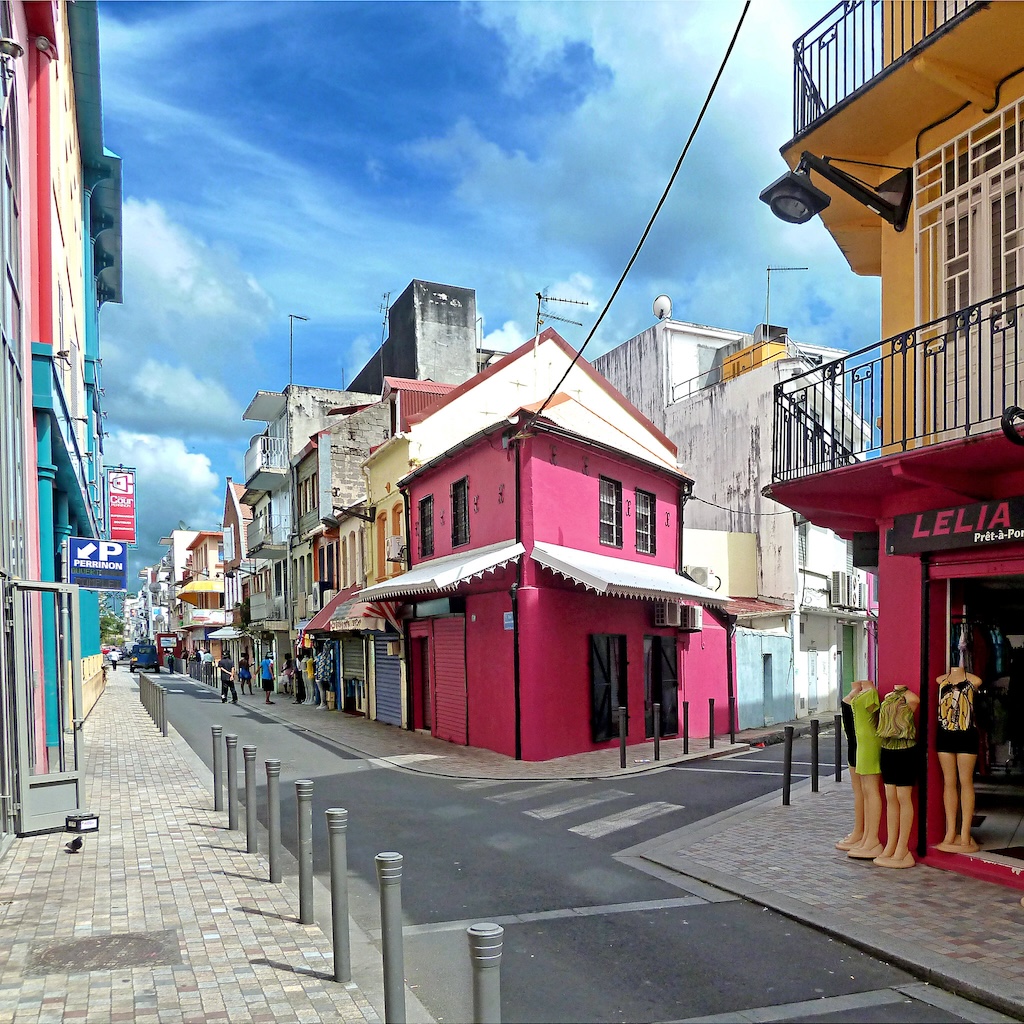
Fort de France
Grab your curiosity (and maybe a fresh coconut), and get ready to explore the city – the imposing Fort Saint-Louis is guarding the bay. This fortress feature thick ramparts and hidden tunnels, ready for attacks that never quite materialised in the way they imagined. Today, its canons rest quietly, overlooking the same turquoise waters that, centuries ago, were fraught with danger and intrigue.
Visit
The Schoelcher Library, a marvel of iron and glass, is named after the French abolitionist who played a significant role in ending slavery in the French colonies. The entire structure was designed for the Exposition Universelle in Paris before being shipped to Fort-de-France, where it was reassembled.
Things to do
Hop on a ferry to the charming town of Trois-Îlets, home to La Pagerie Museum, the birthplace of the Empress Joséphine, as well as the Pottery Village, where you can see artisans at work.
Your favorite ports and anchorages in Fort de France
(Add a spot)-
Bibin Baie de Carénage
C'est magnifique. Excellents renseignements. Bravo pour ce site
-
Despite its popularity, it remains a serene spot. Adjacent to a quiet village where everything is wi... Read more about this listing
-
While it lacks a dock, the area compensates with a snack bar where you can grab a bite to eat.
Anse d’Arlet
This idyllic village is renowned for its stunning beach, but there’s so much more to discover. Historically, Anse d’Arlet was a quiet, modest fishing village, and that serene character remains a defining feature today.
Visit
The Church of Saint-Henri is a focal point of the village and offers a glimpse into local religious and cultural life. Its distinctive architecture and peaceful atmosphere make it a lovely spot to visit.
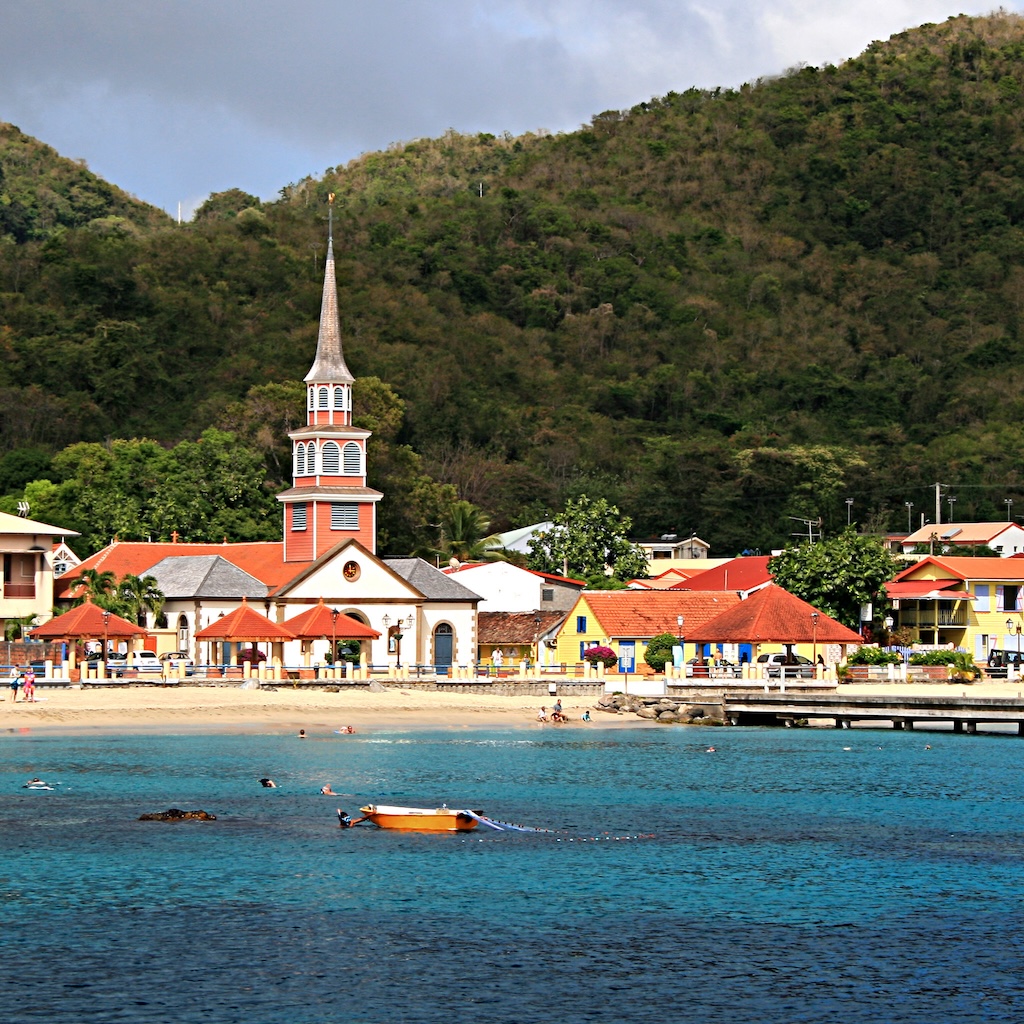
Your favorite ports and anchorages in Anse d’Arlet
(Add a spot)-
The anchorage can be a bit tricky. with a mix of sand and seaweed on the seabed. It can be difficult... Read more about this listing
-
The anchorage itself is on sandy bottoms mixed with some algae, and it's generally well-protected ag... Read more about this listing
-
Un beau mouillage en Martinique. Bonne tenue sur sable. Attention cela dit où vous posez votre pelle... Read more about this listing
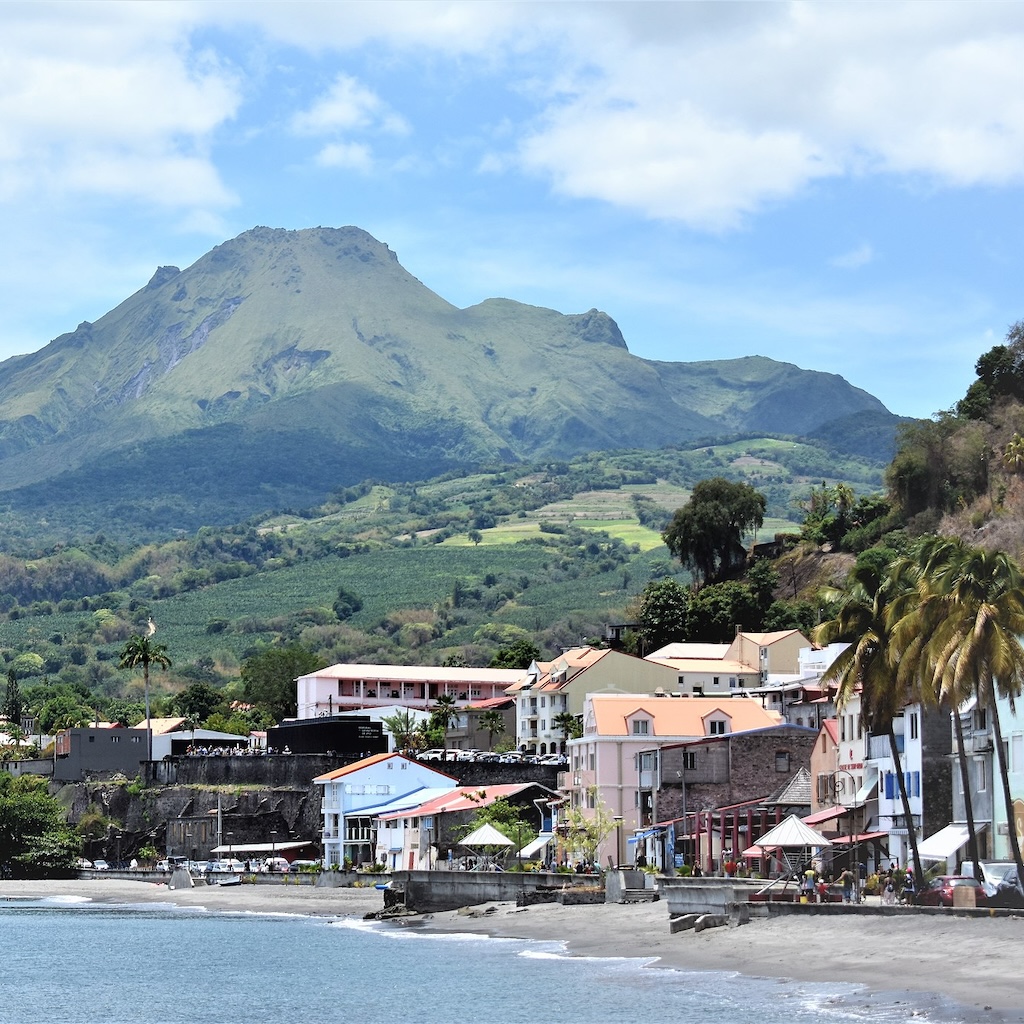
Saint Pierre
Known as the “Paris of the Caribbean” in its heyday, this charming town was once the island’s flourishing capital against the lush backdrop of Mount Pelée. But in 1902, this idyllic scene was shattered in an instant; the Mount Pelée erupted in one of the deadliest volcanic disasters of the 20th century. Yet, Saint-Pierre is far from being a ghost town.
Visit
The Volcano Museum might be small, it’s packed with relics from the devastating 1902 eruption, offering an eerie look at daily life before Mount Pelée’s wrath turned this bustling town to ash. From charred bottles to twisted metal, these objects give an intimate connection to the lives affected by one of the world’s deadliest eruptions.
Things to do
The Depaz Distillery offers tours that take you through the rum-making process, with tastings of their smooth agricole rum. A drink that is part of the culture – tied to the island’s sugarcane fields and its French-Caribbean identity.
Don’t miss
The haunting remnants of the Cachot de Cyparis (Cyparis’s prison cell) are a powerful reminder of one of the few survivors of the eruption – a prisoner who survived by sheer luck, shielded by his thick stone cell.
Your favorite ports and anchorages in Saint Pierre
(Add a spot)-
Rade de Saint-Pierre in Martinique is a picturesque anchorage with a lot of history and charm. The h... Read more about this listing
La Trinité
Once a thriving port, it was a key point for the sugar trade, and the legacy of that era can still be felt today in the old plantation houses that dot the area. These grand estates, many of which have been converted into museums or guesthouses, stand as silent witnesses to the complex history of colonisation, and the eventual rise of Creole culture.
Visit
Château Dubuc, the remnants of an 18th-century plantation, was once the heart of Martinique’s sugar industry. The estate’s ruins, now surrounded by lush greenery, tell the story of the island’s colonial past and its ties to the global sugar trade.
Hiking
A hike through the Caravelle Peninsula nature reserve is a must. The trails meander through mangroves, dry forests, and up to the Caravelle Lighthouse, offering sweeping views of the bay. Along the way, you’ll encounter the ruins of an old sugar mill.
Don’t miss
The Saint-James Distillery. Located just a short drive away has been producing rum since 1765 and offers tours that take you through the entire process, from cane to bottle. And, of course, you’ll get to sample some of their finest blends.
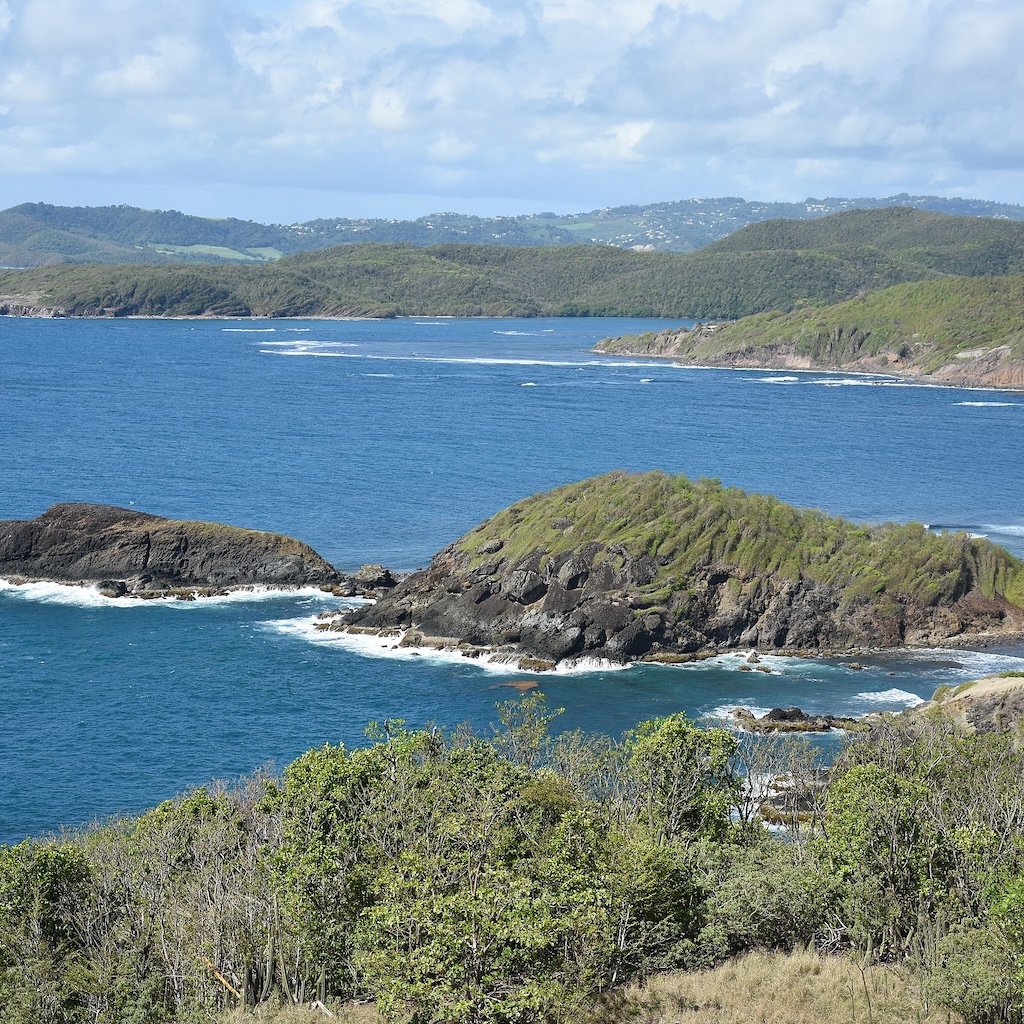
Your favorite ports and anchorages in La Trinité
(Add a spot)-
The anchorage here is quite secure, with good holding. But be cautious of the shallower areas and th... Read more about this listing
-
The mooring conditions are generally good, with a combination of sand and mud seabed, making it suit... Read more about this listing
-
The bay is surrounded by rolling hills, a true escape. The clear waters are perfect for a refreshing... Read more about this listing
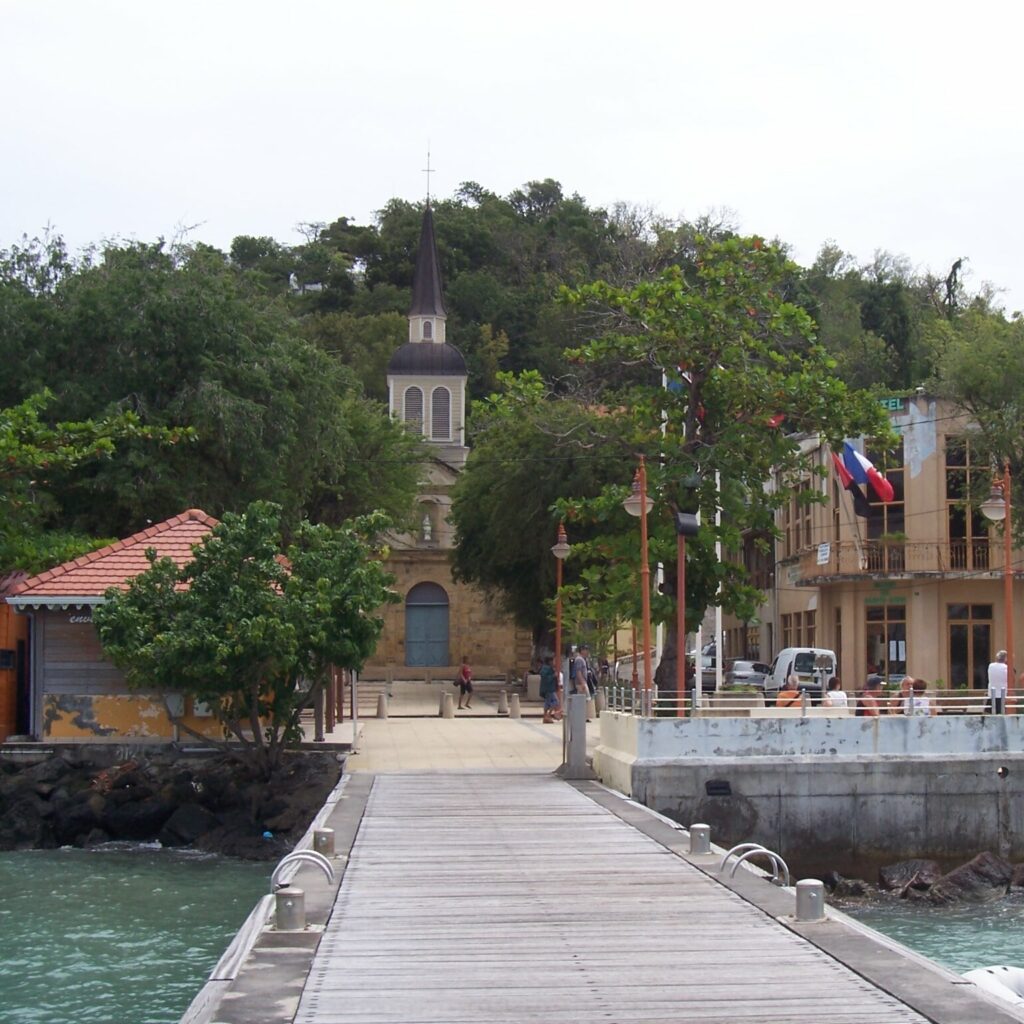
Sainte Anne
This charming town, often praised for its beautiful beaches and lively market scene, is a wonderful spot. Historically, Sainte-Anne was a quiet village with roots that stretch back to the days when French settlers began to cultivate the land.
Beach
Les Salines Beach is a sweeping expanse of white sand stretching endlessly into the turquoise sea. Known for its gentle waves and inviting waters, this beach is a local favourite where families and visitors often set up picnic spots under the shade of palm trees.
Market
With stalls overflowing with colourful fruits, spices, and freshly caught seafood, the Saint Anne market is an excellent place to immerse yourself in the local flavours and pick up some ingredients for a homemade Creole meal.
Hiking
L’Étang des Salines, a nearby lagoon, provides a tranquil escape. The lagoon is ideal for birdwatching, with numerous species making their home in the area.
Your favorite ports and anchorages in Sainte Anne
(Add a spot)-
The depth here typically ranges around 4 meters. The area is lively with a mix of local and visit... Read more about this listing
-
A popular anchorage known for its spacious and well-protected bay. The holding is generally reliable... Read more about this listing
Le Marin
The town is famous across the island for its yachting culture, with the marina being one of the largest in the Caribbean. Here, the creak of masts and the clinking of rigging are part of the soundscape.
Maintenance
Le Marin is home to a wide range of services. If your boat needs any maintenance or repairs, the area is well-equipped with service providers who can take care of everything from routine maintenance to more complex repairs.
Charter
If you’re looking to rent a boat or want a crewed charter, the town offers plenty of charter services.

Your favorite ports and anchorages in Le Marin
(Add a spot)-
The anchorage is very well-protected from most wind directions, which is a big plus for a secure sta... Read more about this listing
-
The marina offers a wide array of services, from fuel and water to well-maintained showers and Wi-Fi... Read more about this listing
Discussion
Home › Martinique Sailing Group
- This forum is empty.
- Oh, bother! No topics were found here.
- You must be logged in to create new topics.











